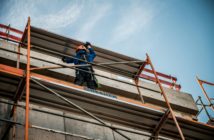New Zealand-based manufacturers, importers, retailers and distributers will be hit with new obligations to provide building product users with information about how building products contribute to compliance with the Building Code

The regulations will commence on 11 December 2023 by which time manufactures and importers must meet their obligations. The regulations apply to designated building products manufactured in, or imported into, Aotearoa New Zealand on, or after, 11 December 2023.
The regulations mean New Zealand-based manufacturers and importers must provide a minimum level of information about the designated building products they supply to the New Zealand market. The information must be publicly available online, and they must be able to provide evidence for any claims they make about their products. It is recommended that the information be easy to understand, as it will be used by a wide range of people.
New Zealand-based distributers and retailers will need to check that the designated building products they supply include the relevant building product information, and that the information is available to their customers.
Information about designated building products must be published and maintained on an internet site that is publicly available, without a need to sign up, provide an email address or login. The website address must be disclosed on the packaging of the product, on the product itself, on a sign next to where the product is sold, alongside the product listing if sold online, or in any similar way that provides a clear link to the internet site where the product information can be accessed.
Information requirements to be displayed online include:
- the name and a description of the product (or product line from which the product is customised) and its intended use
- a product identifier (in most circumstances)
- the legal and trading name of manufacturers and, if applicable, importers
- a statement specifying the relevant clauses of the building code and how the product is expected to contribute to compliance, as well as any limitations on the use of the product
- any design, installation, and maintenance requirements
- either a statement that the product is not subject to any warnings or bans, or a description of warnings or bans applicable to the product.
There are two classes of designated building products with different information requirements for each. The below summarises the information that must be provided for each class of product and when the information must be made available.
Class 1: Batch or mass-produced products
Batch or mass-produced products that are typically available for retail or wholesale purchase. For example, cladding products, mechanical fixings, insulation products, internal lining, roofing products, structural wood-based products, structural steel and reinforcing products, sanitary plumbing and drainage products, including tapware (note: this is not an exhaustive list).
What information must be disclosed:
- A description of the building product.
- A product identifier.
- Details of the manufacturer and (where applicable) importer, including contact information.
- Information on the scope and limitations of use for the building product, and how it is expected to contribute to relevant building code clauses.
- Design, installation, and maintenance requirements.
- A statement confirming the product is not subject to a warning or ban under the Building Act 2004, or a description of any warning or ban that has been made in relation to the product.
When information must be disclosed:
- Either before or when the product is offered for supply by a wholesaler, retailer, or other distributor of the product.
How information must be disclosed:
- Published and maintained on an internet site, free of charge and accessible without pre-conditions (eg a login).
- The address of the internet site must be disclosed on the product, or its packaging, or on a sign next to the product (where appropriate).
- If the product is sold on the internet, the address of the internet site must be published where the product is displayed and in a way that provides a clear link to where the product information can be accessed.
- In case the above provisions are impractical for a particular product, the address of the internet site where the product information is published, can also be disclosed in any similar way that provides the public with a clear link to the internet site where the required product information can be accessed.
Requirements for reviewing, updating, and maintaining information:
- Required product information must be kept up to date on the relevant internet site from which the information is accessible to the public.
- Any changes to the address of the internet site must be disclosed to the public to the extent practicable and as soon as practicable.
- The required product information must continue to be maintained on the internet site while the product is supplied or offered for supply, even if the product has been superseded, or the product is no longer manufactured.
Class 2: Custom-made lines of products
Custom-made lines of products that are made to order to client specifications. For example, external window joinery and doors that have been customised to the specifications of individual clients (for example, specifications on dimensions and glass type).
What information must be disclosed:
- A description of the building product line from which the building product is customised.
- A product identifier, if needed.
- Details of the manufacturer and (where applicable) importer, including contact information.
- Relevant building code clauses, and information on the scope and limitations of use for the building product, and how it is expected to contribute to relevant building code clauses.
- Design, installation, and maintenance requirements.
- A statement confirming the product is not subject to a warning or ban under the Building Act 2004, or a description of any warning or ban that has been made in relation to the product.
When information must be disclosed:
- Prior to ordering so that potential consumers know they are ordering the right product.
How information must be disclosed:
- Published and maintained on an internet site, free of charge and accessible without pre-conditions (eg a login).
- The address of the internet site must be disclosed on the product, or its packaging, or on a sign next to the product (where appropriate).
- If the product is sold on the internet, the address of the internet site must be published where the product is displayed and in a way that provides a clear link to where the product information can be accessed.
- In case the above provisions are impractical for a particular product, the address of the internet site where the product information is published, can also be disclosed in any similar way that provides the public with a clear link to the internet site where the required product information can be accessed.
Requirements for reviewing, updating, and maintaining information:
- Required product information must be kept up to date on the relevant internet site from which the information is accessible to the public.
- Any changes to the address of the internet site must be disclosed to the public to the extent practicable and as soon as practicable.
- The required product information must continue to be maintained on the internet site while the product is supplied or offered for supply, even if the product has been superseded, or the product is no longer manufactured.
The purpose of the new regulations
Building products are central to safe and durable buildings, yet until now, information about products has not been required. This has meant that variable information has been provided about how products contribute to building code compliance, and how they should be used and installed.
The Building Amendment Act 2021 introduced new minimum information requirements for building products, to support better informed decision-making by building consent authorities, building owners, builders and designers. The new regulations designate a number of building products for which building product information must be provided and establishes the minimum requirements for that information.
The regulations were informed by feedback received from the Ministry of Business, Innovation and Employment’s (MBIE’s) public consultation on building product information requirements in 2021. Information about the consultation, including the discussion document outlining proposals for regulations and a summary of the submissions, are available on MBIE’s website.
Building consent authorities (BCAs) frequently request additional information about specified products to ensure compliance with building code requirements. This creates costly delays for building owners.
In addition, an increasing range and complexity of building products and building methods, and cheaper alternatives available, has increased the risk of not meeting Building Code requirements by using products that are not fit for purpose, or not used correctly.
The new building product information requirements apply to products that may contribute to building code compliance. Information on these products will help designers, builders and consumers choose the right products, install them in the correct way and make informed decisions about using alternative products where there are product shortages. Building consent authorities will have the right information readily available to check that plans and specifications meet the building code, which will support more efficient consenting.
In addition, the requirements will ensure people, including homeowners, are given the information they need to make good decisions about products, and use them as intended.
The changes in the Building Amendment Act 2021, and these regulations, are just one part of a broader suite of building system reforms, which aim to lift the efficiency and quality of building work, and provide fairer outcomes if things go wrong.
Resources
MBIE provides the following resources to support manufacturers, importers, distributers, and retailers to understand what their obligations are, and how to meet them.
Example of class 1 – batch or mass-produced products [PDF 343KB]
Example of class 2 – custom-made lines of products [PDF 388KB]
Building Product Information Requirements – Class 1 [PDF 276KB]
Building Product Information Requirements – Class 2 [PDF 279KB]
Step-by-step guide – Building product information requirements
Download a print version of the step-by-step guide [PDF 799 KB]









